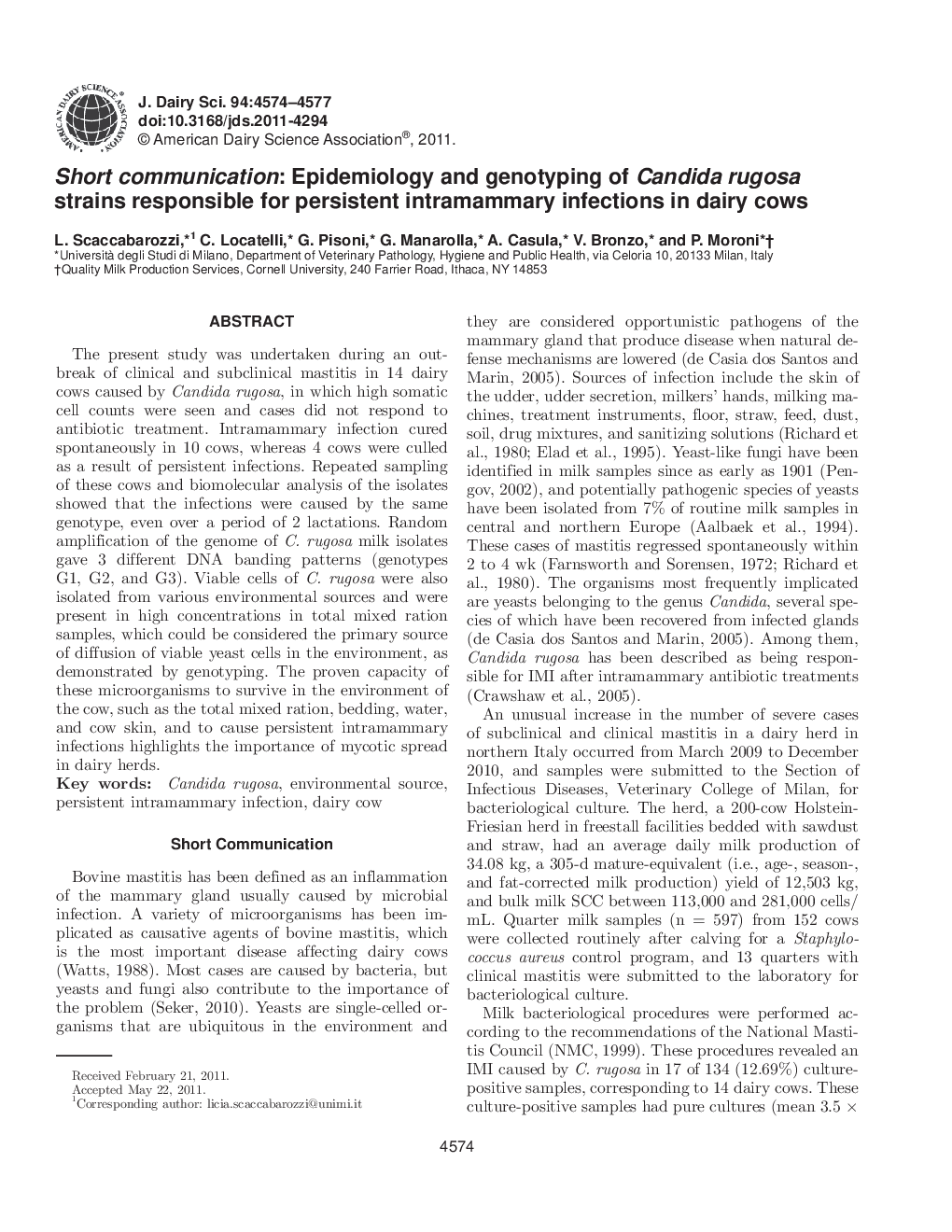| Article ID | Journal | Published Year | Pages | File Type |
|---|---|---|---|---|
| 10980413 | Journal of Dairy Science | 2011 | 4 Pages |
Abstract
The present study was undertaken during an outbreak of clinical and subclinical mastitis in 14 dairy cows caused by Candida rugosa, in which high somatic cell counts were seen and cases did not respond to antibiotic treatment. Intramammary infection cured spontaneously in 10 cows, whereas 4 cows were culled as a result of persistent infections. Repeated sampling of these cows and biomolecular analysis of the isolates showed that the infections were caused by the same genotype, even over a period of 2 lactations. Random amplification of the genome of C. rugosa milk isolates gave 3 different DNA banding patterns (genotypes G1, G2, and G3). Viable cells of C. rugosa were also isolated from various environmental sources and were present in high concentrations in total mixed ration samples, which could be considered the primary source of diffusion of viable yeast cells in the environment, as demonstrated by genotyping. The proven capacity of these microorganisms to survive in the environment of the cow, such as the total mixed ration, bedding, water, and cow skin, and to cause persistent intramammary infections highlights the importance of mycotic spread in dairy herds.
Related Topics
Life Sciences
Agricultural and Biological Sciences
Animal Science and Zoology
Authors
L. Scaccabarozzi, C. Locatelli, G. Pisoni, G. Manarolla, A. Casula, V. Bronzo, P. Moroni,
